Key Takeaways
-
Early Identification: Hornet nests are papery and gray or brown in color, typically built in trees, eaves, attics, and other sheltered locations.
-
Common Nesting Sites: Hornets seek quiet, protected spots like rooflines, sheds, underground burrows, or within wall voids.
-
Seasonal Patterns: Nests are founded in spring, grow rapidly through summer, and peak in activity during late summer and fall.
-
Preventive Measures: Block entry points, treat unpainted wood, manage waste, and reduce outdoor clutter to discourage nesting.
-
Professional Removal: Because hornets are highly aggressive when defending nests, professional pest control is the safest and most effective removal method.
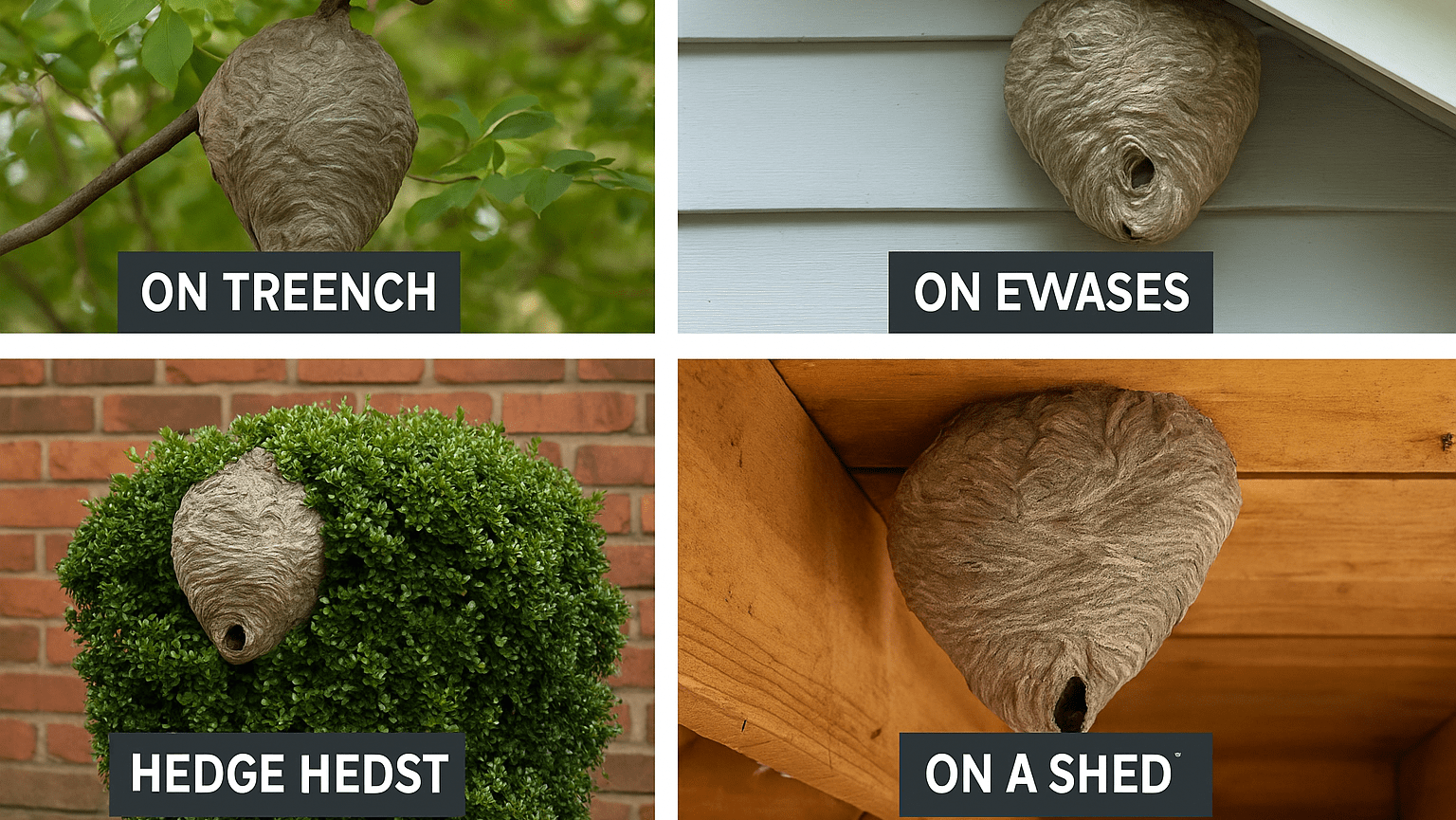 You’re enjoying your coffee on the porch when something catches your eye—a papery blob hanging from a tree branch or tucked under the eaves. A closer look confirms your suspicion. That’s no decoration. It’s a hornet’s nest.
Hornets are large, aggressive members of the wasp family that are known for their painful stings and protective behavior around their nests. Hornets don’t settle randomly. They pick places that offer safety, shelter, and a steady food supply. Understanding where hornets typically nest and how to deal with them you can stop them and can help protect your home and family.
This article acts as a practical guide explaining common nesting sites of hornets, identifying their nests, and offering effective prevention strategies. It also advises when professional pest control services might be necessary to handle hornet infestations safely.
Concerned you’ve spotted a hornet nest nearby? Don’t wait—schedule your Free Pest Inspection today. Our experts will quickly assess and resolve your hornet concerns, ensuring your home stays safe and nest-free.
You’re enjoying your coffee on the porch when something catches your eye—a papery blob hanging from a tree branch or tucked under the eaves. A closer look confirms your suspicion. That’s no decoration. It’s a hornet’s nest.
Hornets are large, aggressive members of the wasp family that are known for their painful stings and protective behavior around their nests. Hornets don’t settle randomly. They pick places that offer safety, shelter, and a steady food supply. Understanding where hornets typically nest and how to deal with them you can stop them and can help protect your home and family.
This article acts as a practical guide explaining common nesting sites of hornets, identifying their nests, and offering effective prevention strategies. It also advises when professional pest control services might be necessary to handle hornet infestations safely.
Concerned you’ve spotted a hornet nest nearby? Don’t wait—schedule your Free Pest Inspection today. Our experts will quickly assess and resolve your hornet concerns, ensuring your home stays safe and nest-free.
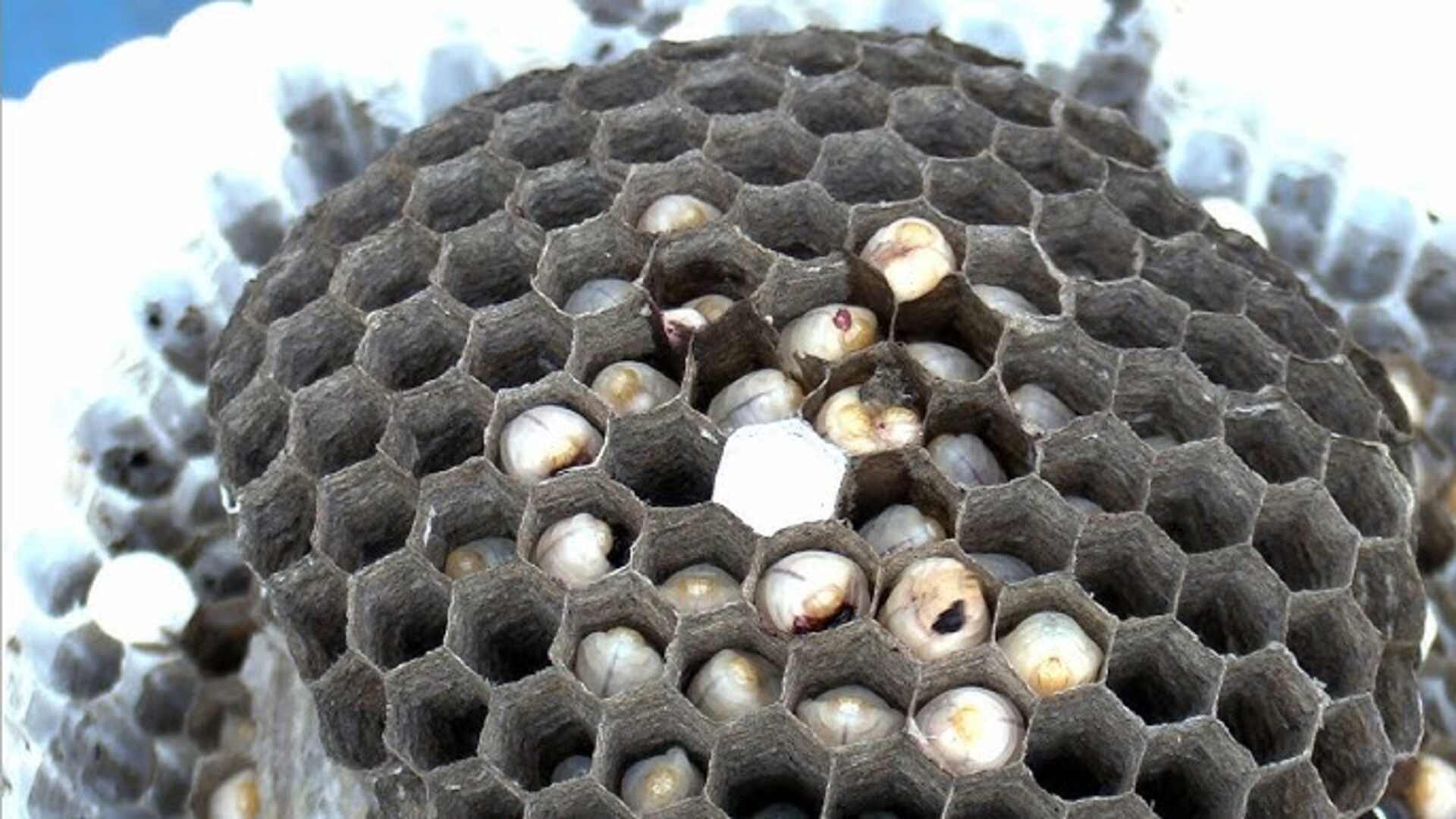

Not getting a solution?
Get your free pest control estimate today!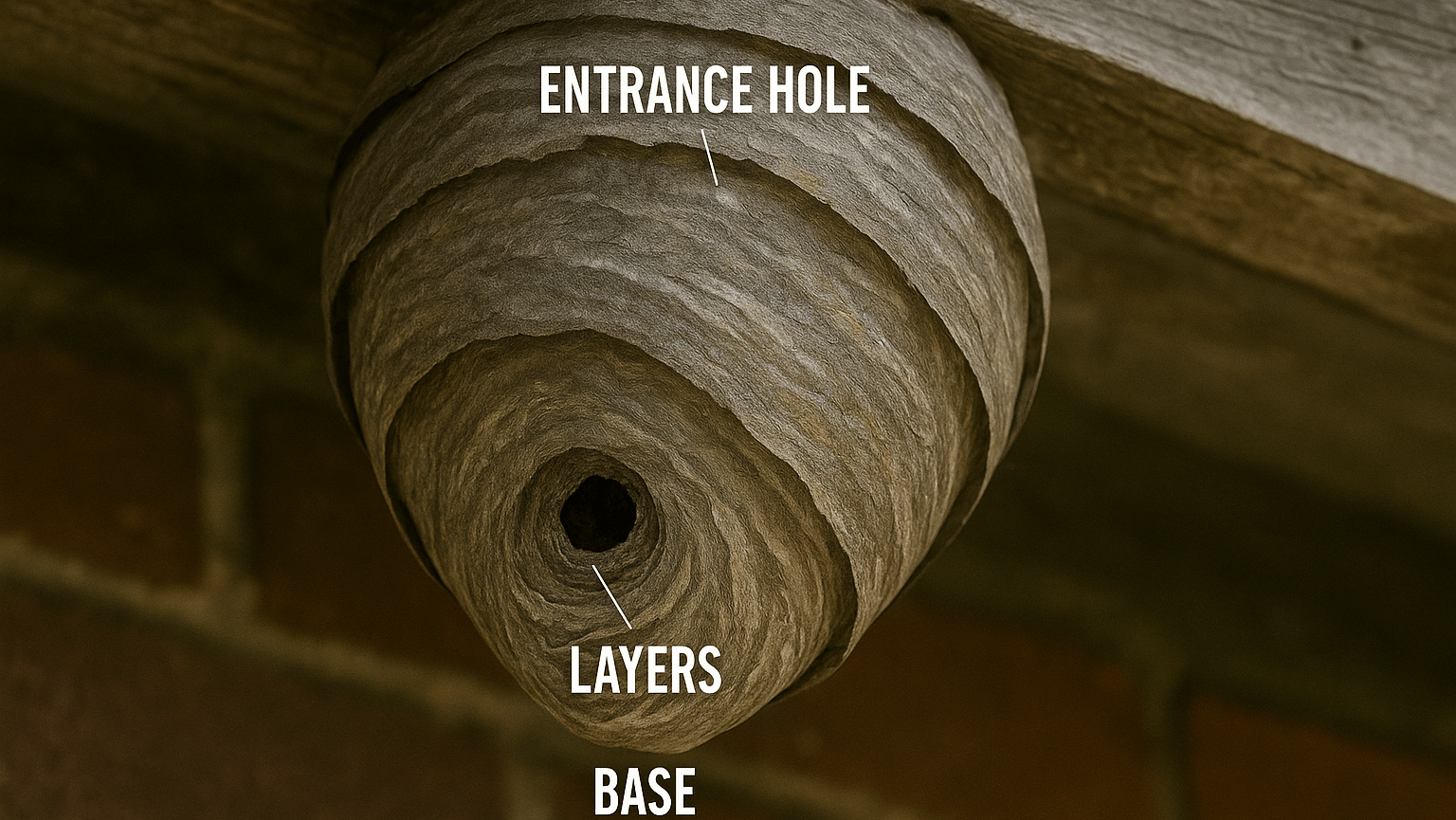
What Does a Hornet Nest Look Like?
Hornet nests are distinctive, highly organized structures used to house larvae and brood. These nests, often suspended from sheltered areas like tree branches, eaves, or attics, are aggressively defended by hornets if disturbed.Physical Characteristics of Hornet Nests
-
Color: Typically gray or light brown layers.
-
Shape: Early Nests like ping-pong ball ,Round, oval, or teardrop-shaped, by July or August like footballs depending on the species and stage of development.
-
Material: Constructed from layers of chewed wood fibers mixed with saliva, resulting in a lightweight, papery texture.
-
Size: Varies widely, from the size of a grapefruit to as large as a basketball.
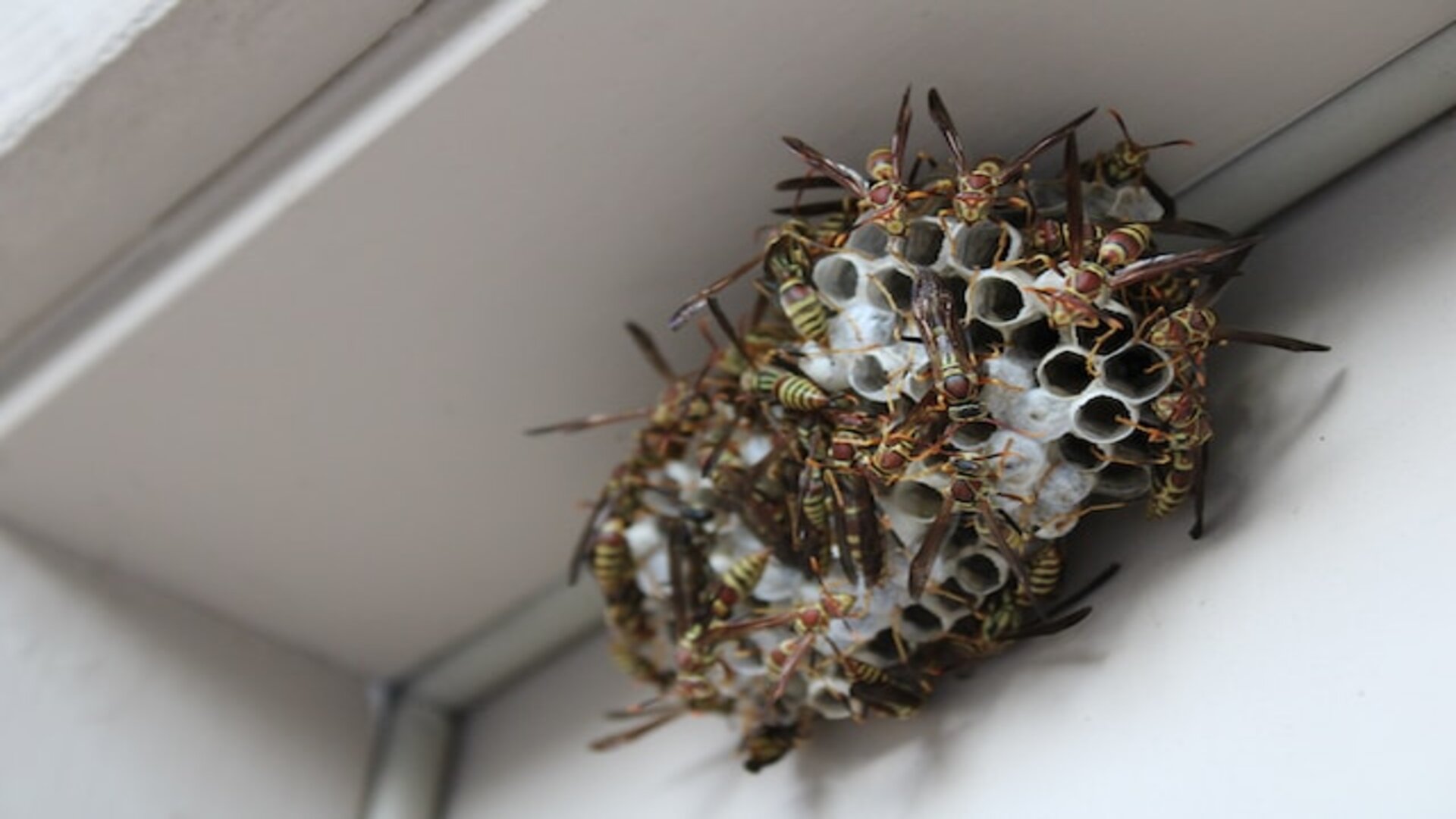
Where Do Hornets Typically Nest?
Hornets are flexible. Hornets build their nests in locations that provide shelter, protection, and access to resources. These sites vary depending on the species but are often in areas with minimal disturbance. Trees and Shrubs One of the most common nesting places. Bald-faced Hornets, in particular frequently love hanging their nest from trees or hiding them inside thick shrubs, especially in wooded areas or orchards. These natural settings provide excellent cover for the colony and often go unnoticed, allowing the nests to grow large and undisturbed. Regularly check trees near patios, sidewalks, or frequently used parts of your yard. Under Roof Eaves or Rooflines Eaves and rooflines near residential buildings are popular nesting spots, offering protection from weather like rain or wind and predators. The corners under your roofline, behind downspouts, or beneath your deck are often perfect for hornets. Their proximity to human activity often leads to encounters with these aggressive insects. Give these spots a visual inspection every couple of weeks during spring and early summer. Sheds, Garages, and Outbuildings Hornets often choose seldom-used structures like sheds or garages for their nests. These spaces are quiet, and protected, and provide a safe environment for their colonies to thrive.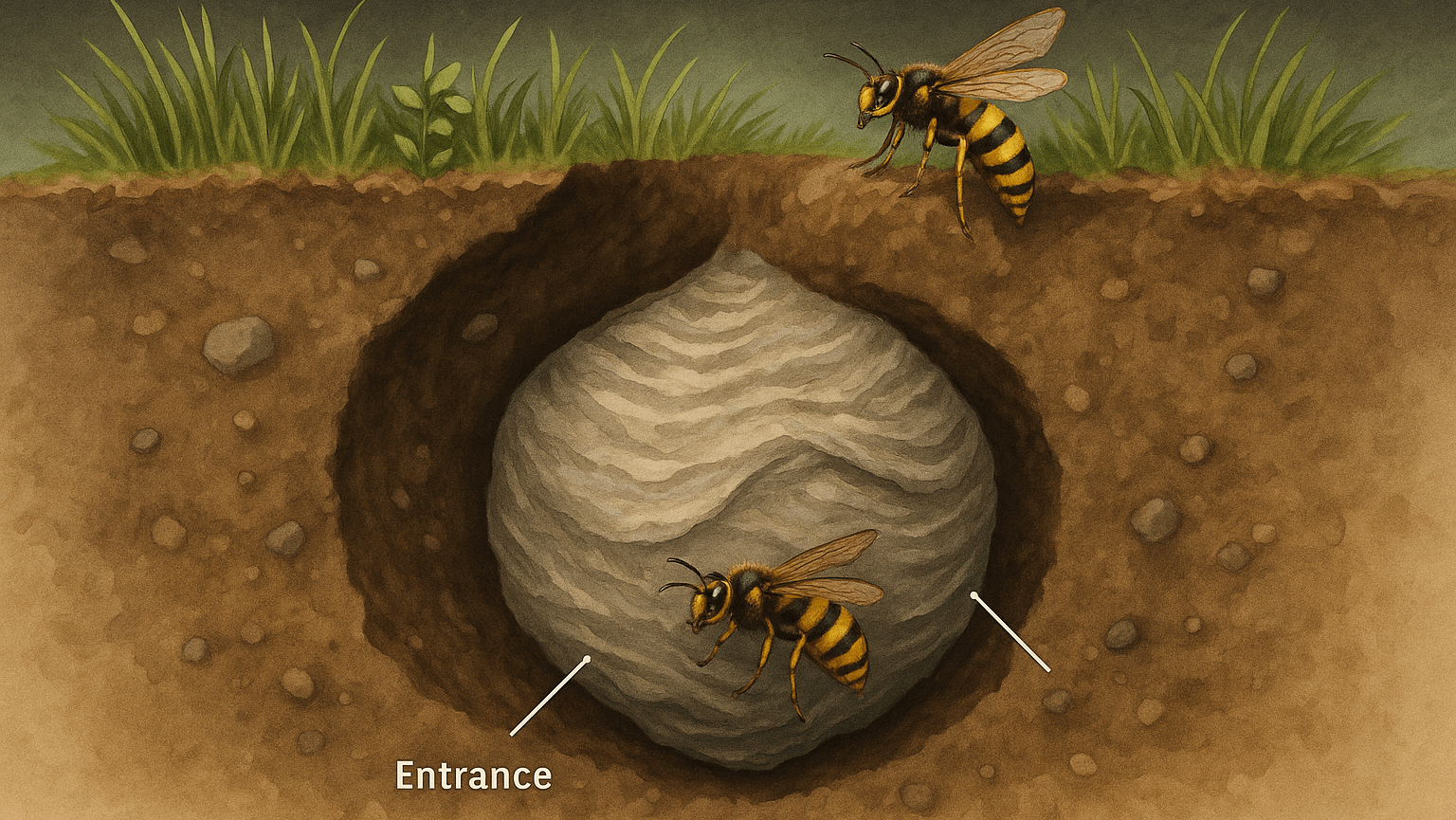 Underground Nests
Certain hornet species opt for ground-level nests, using burrows or natural cavities in overgrown lawns or grassy areas. These nests can be difficult to spot and pose a risk if accidentally disturbed.
Inside Walls, Chimneys, or Attics
European hornets prefer hidden areas. If they find an opening in siding, vents, or your attic, they’ll settle in unseen. You might not spot the nest—but you may hear faint buzzing or tapping behind your walls. If hornets are flying in and out of a small exterior hole, don’t ignore it. They may be building inside.
Outdoor Equipment, Furniture, and Yard Clutter
An old grill, stacked furniture, or a bin you haven’t opened in weeks can all hide hornet nests. These forgotten items often provide the exact kind of shelter hornets need.
Check before moving anything that’s been sitting unused outside.
Inside Hollow Trees, Logs, and Wooden Fences
Nature offers hornets plenty of real estate. Hollowed tree trunks, rotting logs, and even cavities in wooden fence posts give them dark, safe spots to nest.
Old wood piles or neglected corners of your yard may already be claimed by a queen.
Visit our Species, Hornet Control, and DIY Guide sections for additional resources on hornets and ways to tackle a hornet infestation.
Underground Nests
Certain hornet species opt for ground-level nests, using burrows or natural cavities in overgrown lawns or grassy areas. These nests can be difficult to spot and pose a risk if accidentally disturbed.
Inside Walls, Chimneys, or Attics
European hornets prefer hidden areas. If they find an opening in siding, vents, or your attic, they’ll settle in unseen. You might not spot the nest—but you may hear faint buzzing or tapping behind your walls. If hornets are flying in and out of a small exterior hole, don’t ignore it. They may be building inside.
Outdoor Equipment, Furniture, and Yard Clutter
An old grill, stacked furniture, or a bin you haven’t opened in weeks can all hide hornet nests. These forgotten items often provide the exact kind of shelter hornets need.
Check before moving anything that’s been sitting unused outside.
Inside Hollow Trees, Logs, and Wooden Fences
Nature offers hornets plenty of real estate. Hollowed tree trunks, rotting logs, and even cavities in wooden fence posts give them dark, safe spots to nest.
Old wood piles or neglected corners of your yard may already be claimed by a queen.
Visit our Species, Hornet Control, and DIY Guide sections for additional resources on hornets and ways to tackle a hornet infestation.
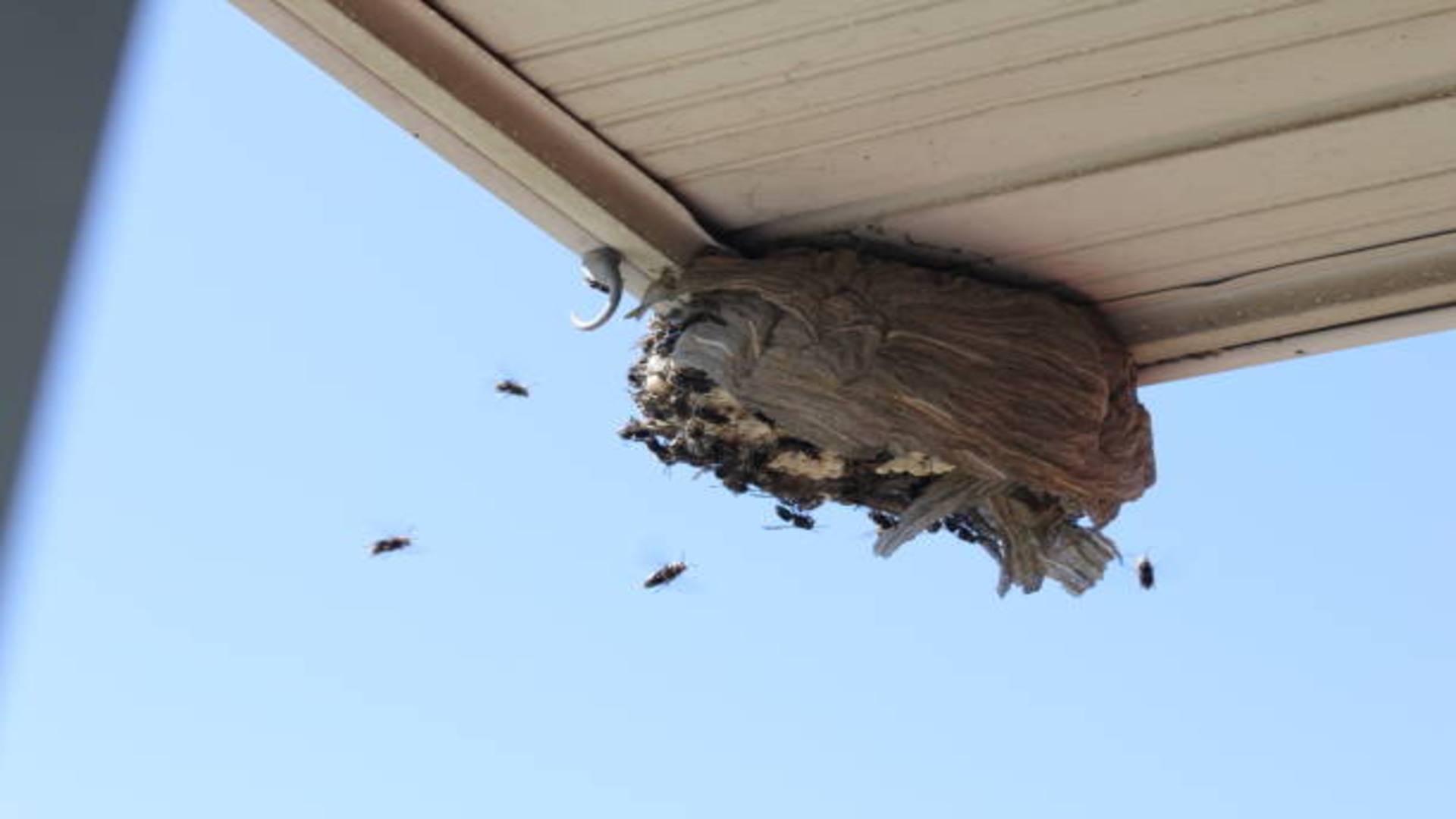
What Are Hornet Nests Made Of?
Hornets build their nests from a paper-like material they create by mixing chewed wood fibers with saliva. The result is a sturdy, weather-resistant outer layer that houses the internal hexagonal cells.Key Components of Hornet Nests
-
Wood Fibers: Sourced from trees and decaying wood.
-
Saliva Mixture: Creates a paper-like texture.
-
Hexagonal Cells: Interior compartments for eggs and larvae.
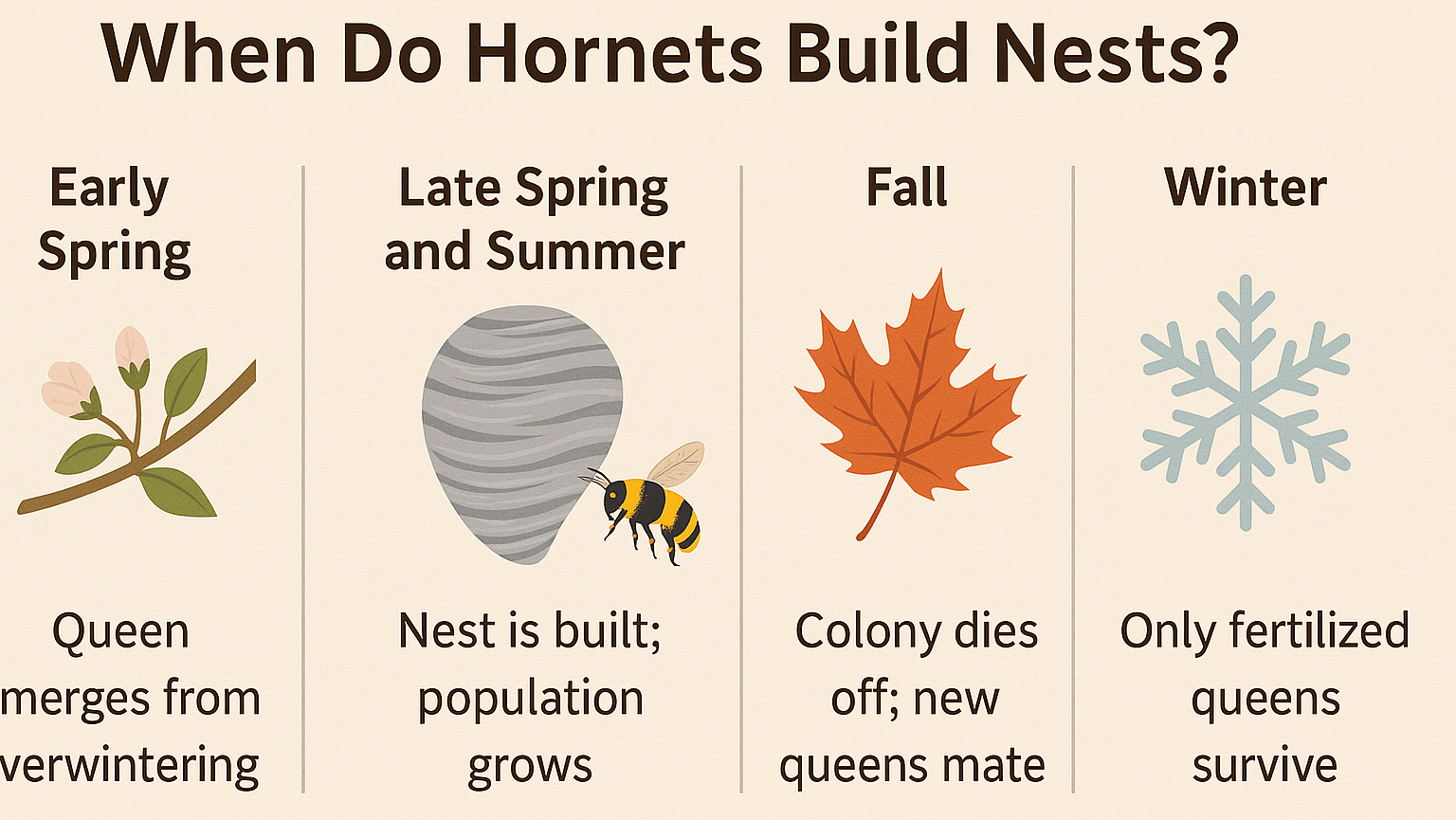
When Do Hornets Build Nests?
- Understanding their seasonal behavior can help you stop a nest before it becomes a problem:
-
Spring (March to May): Queens emerge from hibernation and look for new nesting sites. Early detection allows for easier and safer removal.
-
Summer (June to August): Nests grow rapidly, and hornets become highly territorial. This is when they are most aggressive and protective.
-
Fall (September to October): Colonies peak in size. New queens leave the nest to find overwintering spots, while workers become increasingly active.
-
Winter (November to February): Nests are abandoned and will not be reused, but the same area may be chosen for nesting the following year.
How to Find A European Hornet Nest?
European hornet nests are large, gray, and papery structures that can grow as big as a basketball. These nests are commonly found hanging from trees, inside hollow trunks, or under eaves. During the summer and fall, European hornets are most active. It’s important to stay cautious when near a European hornet nest, as these insects are highly defensive. Avoid approaching too closely, and seek professional assistance if removal is necessary. Our team can provide a customized approach to protect your home effectively.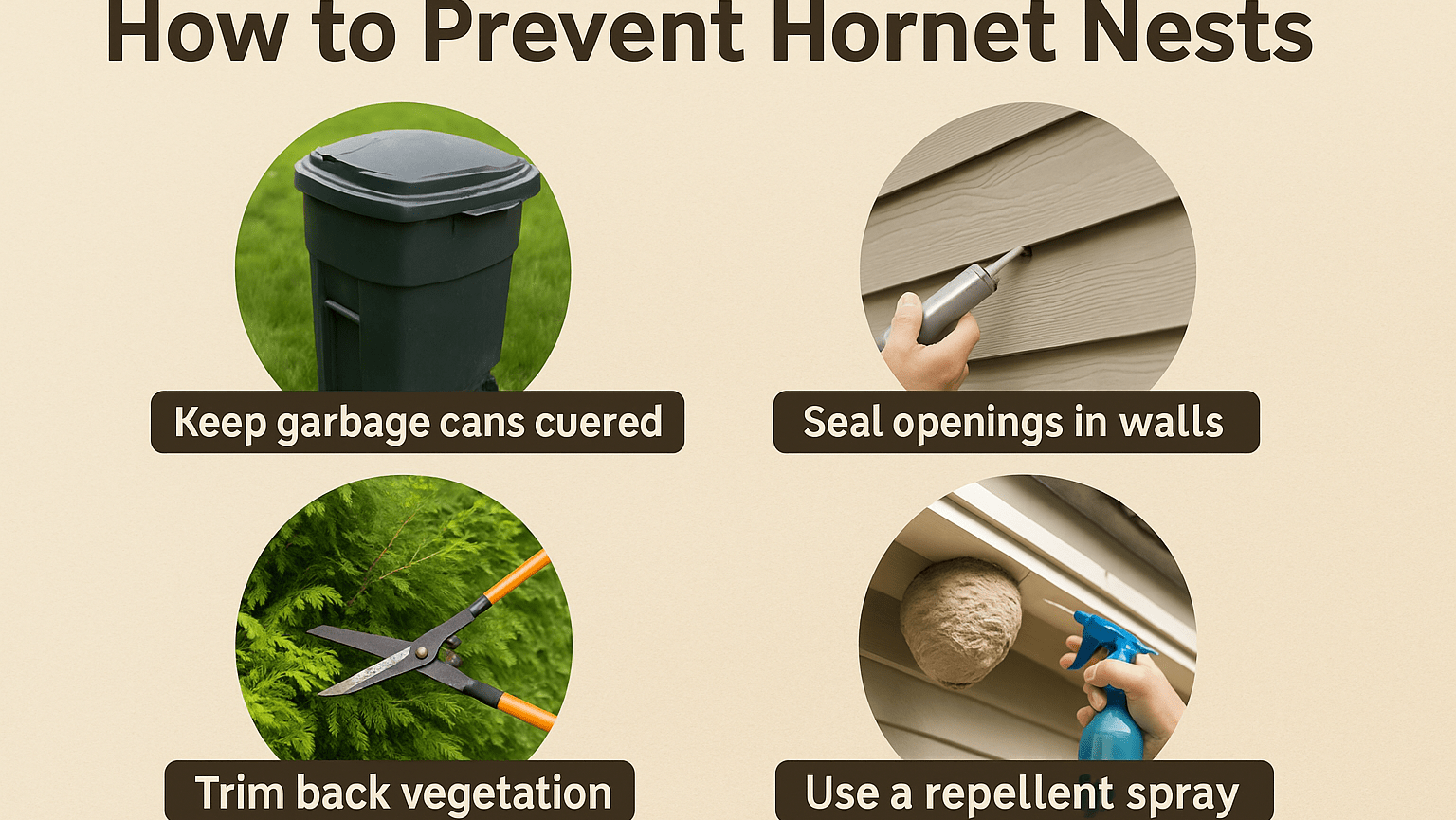
How to Prevent Hornet Nests Around Your Property
- A little prevention in early spring can save you from dealing with an angry colony in summer. Here’s how to make your space less appealing to hornets:
-
Seal Gaps and Cracks: Inspect siding, vents, rooflines, and attic spaces. Use caulk or steel mesh to block even small openings that hornets can use to enter.
-
Treat Exposed Wood: Hornets chew untreated wood to build nests. Paint or seal fences, decks, and sheds to make surfaces less appealing.
-
Secure Trash and Remove Food Sources: Keep garbage cans sealed, rinse recyclables, and remove pet food or fallen fruit that could attract hornets.
-
Clear Yard Clutter: Remove unused garden tools, supplies, and debris. These create hidden, sheltered spots perfect for nest building.
-
Use Fake Nests as Decoys: Hang decoy nests to take advantage of hornets’ territorial behavior—this may deter them from nesting nearby.
-
Keep Watch During Spring: Lone hornets scouting your property may be queens. If one keeps returning to the same spot, act quickly to prevent nesting.





